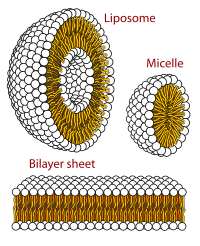
Photo from wikipedia
Black Carbon (BC) is an important constituent of both aquatic and terrestrial environment, but also has several adverse effects on human health, aquatic life, and contributes to the global climate… Click to show full abstract
Black Carbon (BC) is an important constituent of both aquatic and terrestrial environment, but also has several adverse effects on human health, aquatic life, and contributes to the global climate change. Thus, to understand the fate and transport of BC nanoparticles (NPs) in the environment, it's important to understand the colloidal stability or aggregation behaviour and factors affecting it, under various environmental conditions, including both aquatic and atmospheric. This study investigated the individual influence of ionic strengths, valence (Na+, Ca2+ and Mg2+), metals (Zn2+, Cu2+, Ni2+ and Cd2+), and organic substances (PO43- and Humic Acid: HA) on the effective diameter or hydrodynamic diameter and zeta potential of BC-NPs in aquatic systems. A dynamic light scattering (DLS) principle-based 90 Plus Particle Size Analyzer was used for measurements of BC particle size and zeta potential at varying ionic chemistry. The results showed that strong ionic strength promotes aggregation of BC-NPs till the repulsion forces become dominant due to more negative zeta potential. The Aggregation of BC-NPs was observed to be significantly dependent on the ionic valence, where divalent ions caused more aggregation than monovalent ions. Metal ions at higher concentration (around 1 mM) promoted the aggregation rate of BC-NPs, and Cu+2 dominated among all selected metals. Conversely, organic matter (PO43- and HA) tends to promote stabilisation of BC-NPs instead of aggregation. Though this study investigated individual effect of substances, influence of possible environmental combination of substances will help to get more clear idea.
Journal Title: Chemosphere
Year Published: 2022
Link to full text (if available)
Share on Social Media: Sign Up to like & get
recommendations!